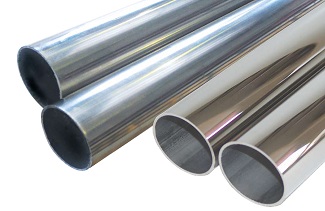
A Comparative Guide to Stainless Steel Standards: European vs. American
- Views:0
- Author:
- Publish Time:2025-08-05
- Origin:
Stainless steel, a vital metal used across various industries, is governed by two primary quality standards: European and American. Understanding the differences between these standards can help you make informed decisions when selecting stainless steel for your projects. Here’s a detailed comparison of European and American stainless steel standards.

Overview of European Standards
The European stainless steel standard, often referred to as the EN standard, emphasizes the chemical composition and overall mechanical properties of the material. The European Standardization Committee has established a comprehensive set of standards, including:
EN 10088-1: General technical delivery conditions for stainless steel
EN 10088-2: Chemical composition specifications for stainless steel
EN 10088-3: Mechanical property requirements for stainless steel
These standards are designed to ensure that stainless steel products meet the rigorous demands of the European market and are suitable for a wide range of applications.
Overview of American Standards
In contrast, the American stainless steel standard, known as ASTM, prioritizes the physical properties and manufacturing characteristics of the material. The American Society for Testing and Materials has created a series of standards that address the quality and performance of stainless steel, including:
ASTM A240: General specification for stainless steel plates, strips, and rings
ASTM A276: Standard specification for stainless steel bars and hot-workable alloys
The focus here is on the physical attributes and processing capabilities of stainless steel, ensuring its reliability and adaptability during production.
Key Differences in Testing and Specifications
There are notable differences in testing methods and specification details between the two standards:
Testing Units: European standards typically utilize metric units, while American standards favor imperial units.
Parameters: European standards often assess impact strength and elongation to ensure stable performance under various stress conditions. In contrast, American standards emphasize hardness, tensile strength, and other parameters to verify reliability across different temperatures and environments.
Making the Right Choice
When selecting stainless steel materials, your choice between European and American standards should be guided by specific needs and application environments:
If your target market is primarily Europe, adhering to European standards is advisable.
Conversely, for a market focused on the United States, American standards would be more beneficial.
In some cases, it may be necessary to integrate both standards to ensure comprehensive quality and performance.
Conclusion
In summary, there are distinct differences in how stainless steel quality standards are formulated and evaluated between Europe and the United States. The European standards concentrate on chemical composition and mechanical properties, while the American standards focus on physical properties and processing characteristics. Selecting the appropriate standard based on your specific needs and market positioning, along with relevant testing methods, will ensure that the stainless steel used meets the required quality and performance expectations.















